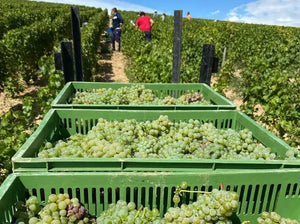Blog » Sancerre
-
Sancerre Secret: Vincent Pinard FlorèsOne thrill of living in Beaune in 2012 was getting familiar with an enormous range of Burgundy producers. Beaune had its fair share of wine bars, and none devoted serious space to wines outside the region. That changed when the natural-focused Les Vins de Maurice opened in the spring, where wines from the Jura, Rhone, and Loire Valley covered the walls.
One day, I asked Maurice to introduce me to a new producer doing something unusual, and he quickly picked up a bottle of Vincent Pinard's Sancerre. I've been hunting for his wines ever since, brought to the U.S. by the same importer as Mugnier, Comte Liger-Belair, and Lafarge.
Pinard is in the village of Bué—some of the most prized vineyards in the region are here (alongside Chavignol). His wines are overtly stylish, each cuvée standing apart from one another. They have intense concentration and a gossamer texture that bears little resemblance to what we commonly expect from Sancerre.
Florès comes from a collection of vineyards in Bué. Aged in stainless steel tanks, the racy and crispy classic Sauvignon Blanc citrus notes mesh perfectly with Pinard's more layered and textural style. When fall hits, and I reach for Sancerre, this is the kind of secret overachiever that delivers!
.svg?v=162776257677185172071677832259)



